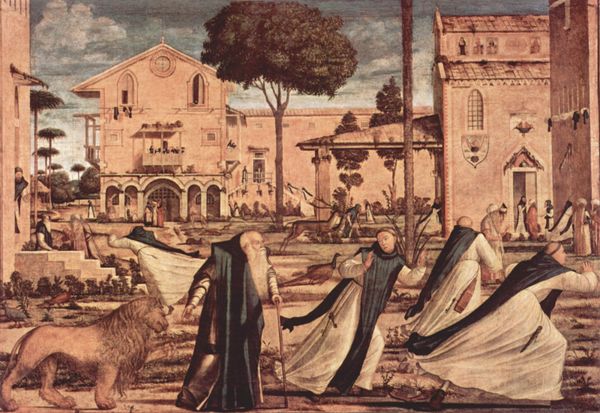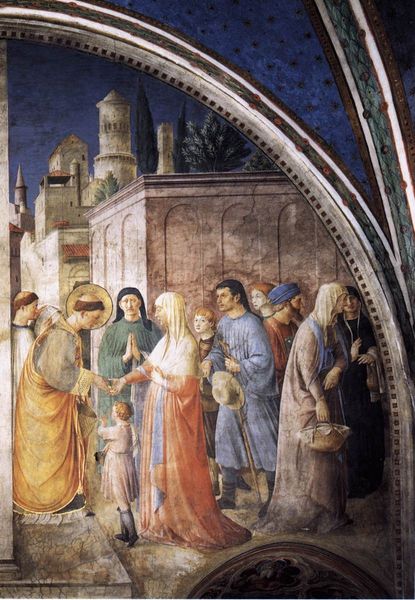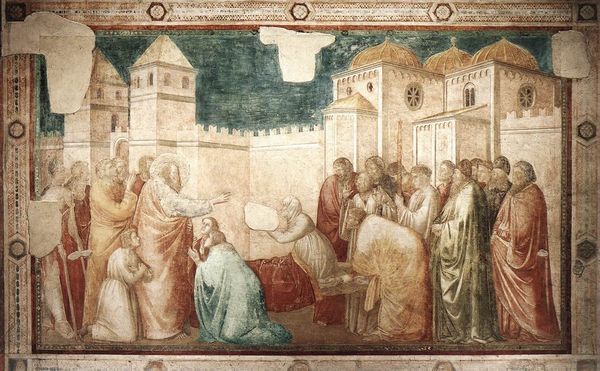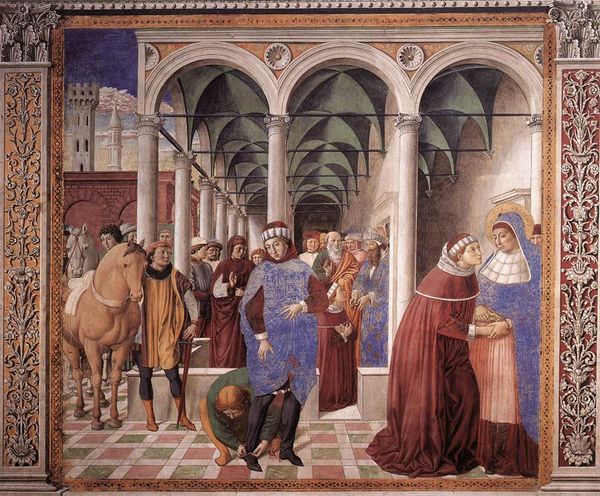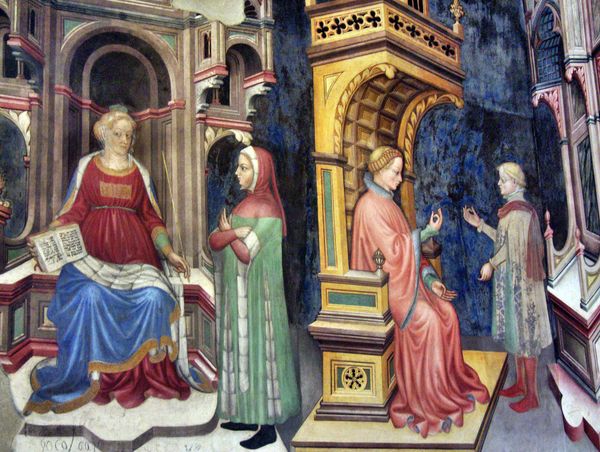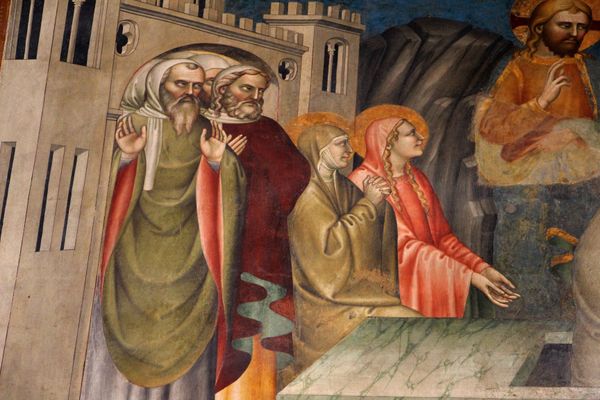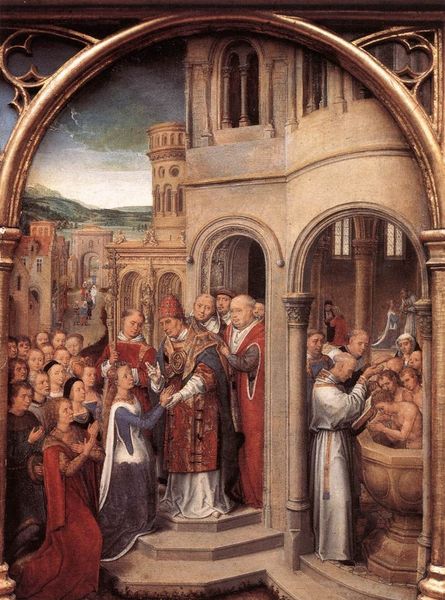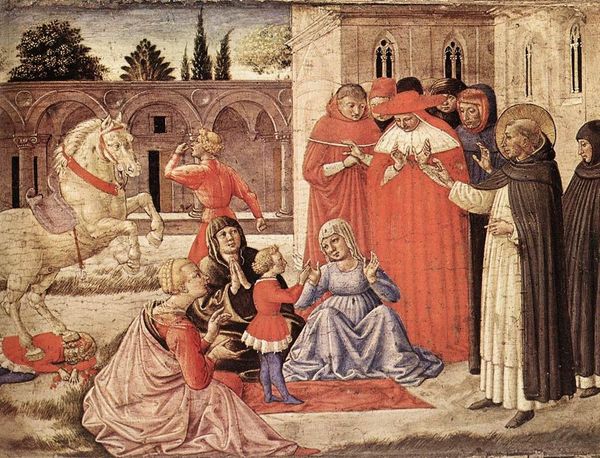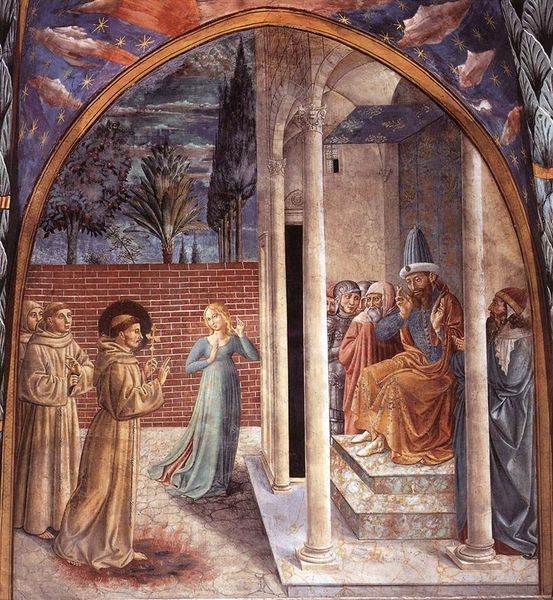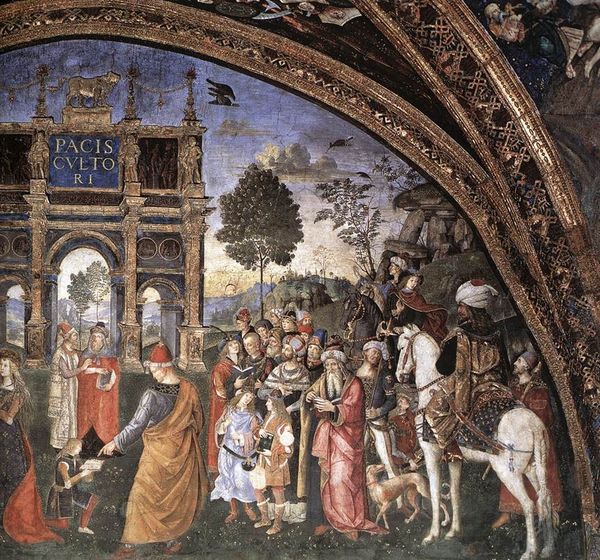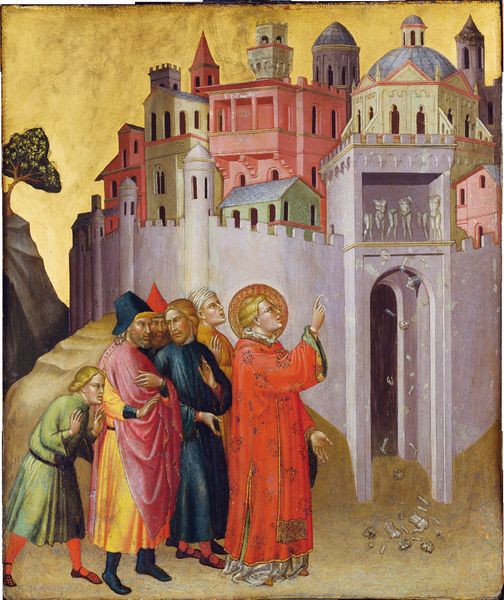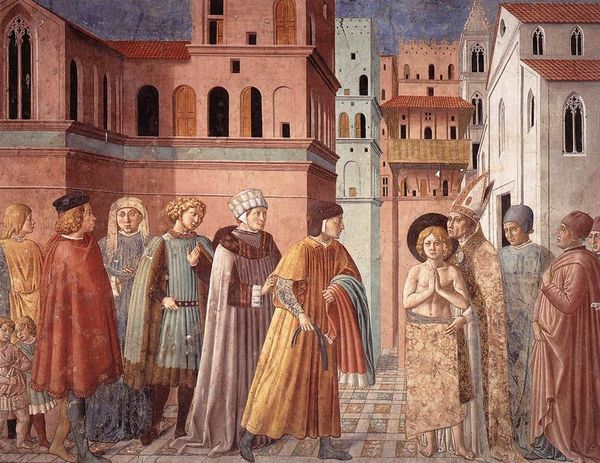
painting, fresco
#
portrait
#
narrative-art
#
painting
#
landscape
#
fresco
#
oil painting
#
group-portraits
#
christianity
#
history-painting
#
italian-renaissance
#
virgin-mary
Copyright: Public domain
Curator: Domenico Ghirlandaio’s fresco, "The Visitation," completed around 1490, really overwhelms the senses, doesn't it? Editor: Absolutely. My first impression is one of quiet anticipation. There's a formality and solemnity in the women's postures, in spite of their close proximity. Curator: Precisely. This meeting between Mary and Elizabeth holds such profound symbolism. Elizabeth, though older, acknowledges Mary's sacred burden, representing the continuity of faith, yet a new chapter simultaneously, and Ghirlandaio captured the cultural moment masterfully. Look closely, and you’ll find an intriguing mirroring of features. Editor: Yes, I’m drawn to the representation of powerful women that resonates across history. Considering that both are pregnant, the scene speaks to intergenerational support among women—a concept as crucial then as it remains today. I am struck by how their elaborate gowns don't overshadow their expressions. Curator: A crucial element, considering Mary’s blue garb, represents purity, while Elizabeth’s red can signify divine love, highlighting their individual virtues. The setting is worth analyzing as well, and the narrative layers are powerful: what does the classical architecture signify in the landscape beyond these sacred figures? Editor: Definitely, the figures on the right in modern garb—it appears as if Ghirlandaio inserted them within his landscape as if to assert the divine made tangible and present. Considering the history of women and religion, placing them in such positions holds great meaning. I cannot think of where their agency as a group is more apparent than here. Curator: Agreed, their attire and postures create a complex visual rhythm. Ghirlandaio seems to explore how divine narrative could take space in the context of early renaissance humanism and realism. The setting’s detail contributes to the fresco’s timelessness, while its historical references make it so specifically Florentine. Editor: Looking at it this way, this work seems to be a statement, placing their meeting within a real, recognizable place, but charged with moral significance. It is a reminder of the intersection between private moments of faith and larger community realities. Curator: A point well made. This fresco is so much more than an illustrated biblical story—it's a window into social relations, cultural memory, and a lasting devotion represented by this visit. Editor: Yes. It's also fascinating to consider the women supporting each other across different age groups. These visual relationships present us a lens into understanding their status, the cultural expectations of female spaces, and more broadly, about devotion at that particular time.
Comments
No comments
Be the first to comment and join the conversation on the ultimate creative platform.
